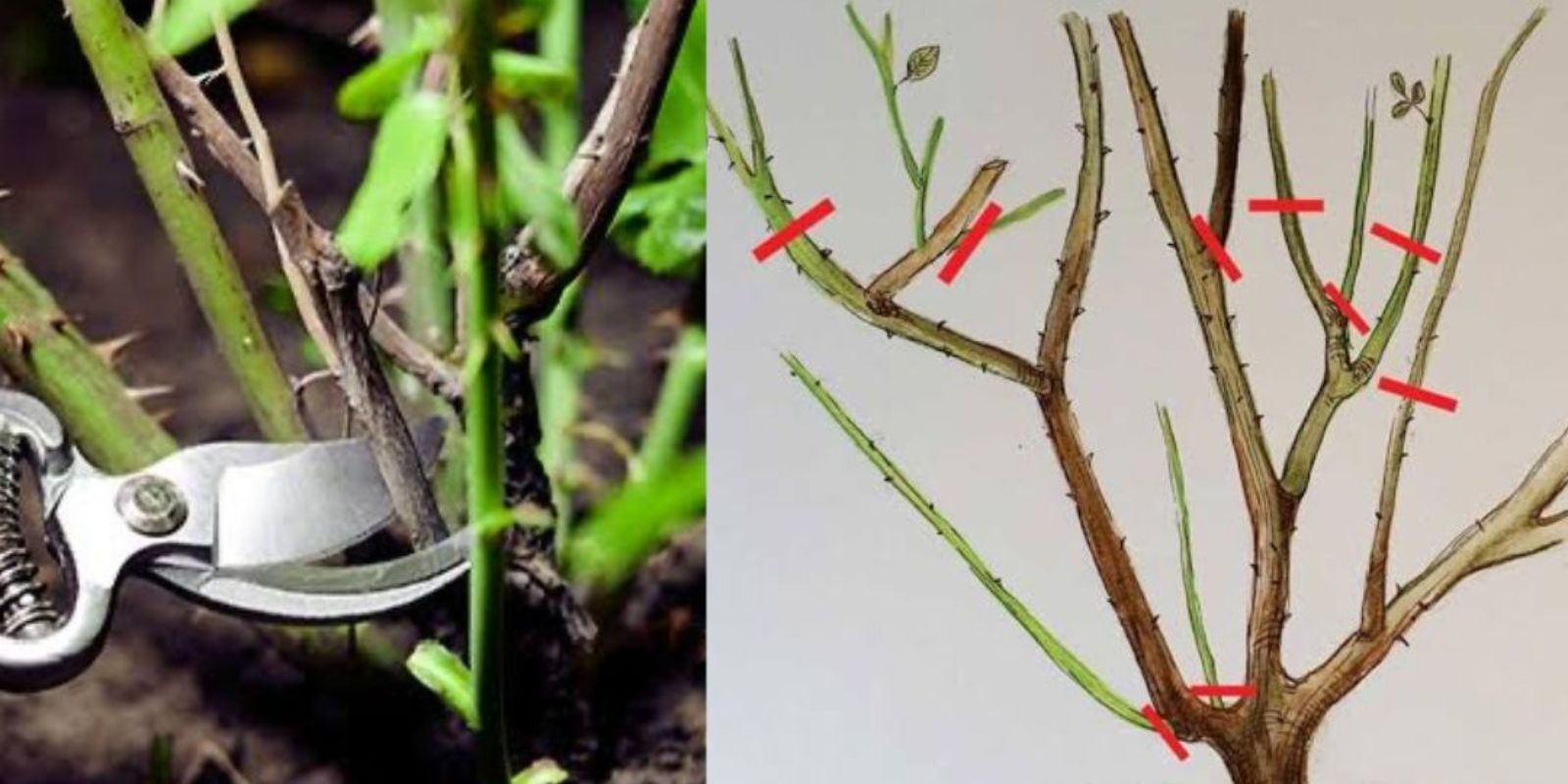Roses are timeless symbols of beauty, love, and elegance, but maintaining their charm requires care and attention. Pruning is one of the most essential steps in ensuring healthy growth and abundant blooms. In this detailed guide, we’ll take you through the art of pruning roses step-by-step, so even beginners can enjoy radiant roses in their garden.
Why Prune Roses?
Pruning isn’t just about keeping your rose bushes neat—it’s essential for their health and longevity. Regular pruning removes dead or diseased wood, encourages new growth, and improves air circulation. Properly pruned roses bloom more profusely and are less susceptible to pests and diseases.
When to Prune Roses
Timing is everything when it comes to pruning. Most roses are best pruned in early spring when the weather begins to warm, and you notice buds starting to swell. This is typically between late winter and early spring, depending on your region.
Exception: For repeat-flowering roses, light pruning can also be done in late summer after the main bloom cycle to encourage a second wave of flowers.
Tools You’ll Need
Before you begin, ensure you have the right tools:
- Pruning shears: Use sharp, clean tools to make clean cuts. Bypass pruners are ideal for roses.
- Gloves: Protect your hands from thorns with thick, durable gloves.
- Rubbing alcohol: Use this to disinfect your shears between cuts, especially if you suspect disease.
- Loppers or a pruning saw: For thicker branches, these tools may be necessary.
Step-by-Step Guide to Pruning Roses
1. Prepare Your Tools
Start by cleaning and sharpening your pruning shears. Dull tools can tear branches, leaving the plant vulnerable to infection. Disinfect your tools with rubbing alcohol to prevent the spread of diseases.
2. Choose the Right Time
Prune in early spring when new growth begins. If your roses have been dormant over the winter, wait until the risk of frost has passed and buds start to form. For warm climates, this may happen earlier in the year.
3. Remove Dead or Diseased Wood
Inspect your rose bush for any dead, damaged, or diseased wood. Dead branches are typically brown, brittle, and dry. Diseased wood may show black spots or unusual discoloration. Cut these branches back to the base or healthy growth.
4. Eliminate Crossed or Crowded Branches
Look for branches that cross over each other or grow inward toward the center of the plant. These can rub against one another, causing wounds and inviting pests. Removing them allows better air circulation, reducing the risk of fungal infections.
5. Cut Above an Outward-Facing Bud
Make clean cuts at a 45-degree angle above an outward-facing bud. This encourages new growth to extend outward rather than inward, helping the plant maintain an open, vase-like shape. The angled cut prevents water from pooling, which reduces the risk of rot.
6. Shape the Plant
Aim for a balanced structure by keeping the center of the plant open. Remove any thin, weak stems and focus on retaining strong, healthy canes. Most gardeners aim for 4-8 evenly spaced canes to form the framework of the bush.
7. Clean Up the Area
Clear away all leaves, branches, and debris around the base of the rose bush. This prevents pests and diseases from taking hold. Consider adding a layer of mulch to retain soil moisture and suppress weeds.
Pruning Different Types of Roses
Different types of roses have specific pruning needs:
- Hybrid Tea Roses: These require the removal of old wood and the shaping of 4-6 strong canes. Trim these canes back to 12-24 inches tall.
- Climbing Roses: Remove deadwood and shape the plant. Leave the main structural canes intact and cut side shoots back to 3-4 inches.
- Shrub Roses: Prune lightly to maintain shape. Focus on removing old and weak wood, but avoid cutting them too hard.
- Floribunda Roses: Remove old flowered wood and lightly shape the plant. These are more forgiving and don’t require heavy pruning.
Tips for Success
- Disinfect Regularly: Clean your tools between cuts to prevent spreading disease.
- Feed After Pruning: Use a balanced rose fertilizer to encourage healthy growth.
- Water Consistently: Keep the soil moist but not waterlogged, especially after pruning.
- Be Patient: If you’re new to pruning, don’t worry—roses are resilient and can recover from mistakes.
Common Mistakes to Avoid
- Pruning at the Wrong Time: Cutting roses too late or during frost can harm their growth.
- Using Dull Tools: This can tear the stems and leave them prone to disease.
- Over-Pruning: While roses need regular pruning, cutting too much can stress the plant.
- Ignoring Air Circulation: Crowded roses are more likely to suffer from pests and diseases.
Aftercare for Pruned Roses
Once pruning is complete, your roses will need a little TLC to thrive:
- Watering: Provide consistent moisture, especially during the growing season.
- Fertilizing: Apply rose fertilizer every 4-6 weeks to promote vigorous growth and blooming.
- Mulching: Add mulch around the base to retain moisture and suppress weeds.
Why Pruning is Worth the Effort
Pruning roses may require a bit of effort, but the results are worth it. Properly pruned roses reward you with healthier plants, more vibrant blooms, and a garden that radiates beauty. By following these steps, you’ll transform your roses into the centerpiece of your outdoor space.
💬 What’s your go-to pruning tip? Share your experience below!
🌿 #RoseCareTips #PruningRoses #GardeningHacks #RoseLovers #BloomBright #GardenGlow

